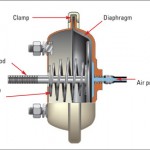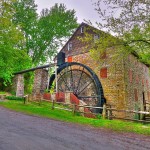It might be best to start out with the way not to change resolution – using the width or height tag in a web page changes the size, but not the resolution or file size. Those who post pictures to a thread at rv.net will see this command when using the “picture” icon. Under the space used to enter the url of the image is the statement “Optionally, enter a height and width for the image” and a Height & Width blank field. Entering a value in one of the blanks will change the size of the image when viewed on the page. It is helpful (and requested by rv.net: “Pictures posted in a profile or within the text portion of a topic should not exceed 640 pixel width, 480 pixel height or 100kb file size.”) When you use this tag it avoids expanding the page width when large images are added to a page, but it does not change the file size – large files will be slow to load. A thread such as Picture Posting will be very slow to load if everyone posts 1-2MB images even if they have used the Width tag to make them smaller.
A “by the way” – don’t enter a value into both Width & Height. Choose only one or the ratio of height to width (called aspect ratio) will change, resulting in squashed or stretched images.
It is better to actually change the size of the image. Changing either the resolution or, in the case of jpg images, the quality will actually change the file size. If you make a smaller image file size, the results will be faster page loads.
Read on to find out how!
The best way to change the resolution of an image is with an editor. There are editors built into the major operating systems as well as online editors such as Webbild.com (my preference) or myimager.com. Both are free to use however there may be both input & output size limits.
There are also free editors that can be downloaded to your computer. Picasa from Google is a popular one for Windows PCs – in addition to editing, it provides image storage. Gimp is available for almost any operating system (Windows, Mac OS X & UNIX) but may be a bit “techie” for some. Another popular editor for Windows is IrfanView. Again, all of these are free and quite powerful.
If you are willing to pay for an editor, there are a number available. My favorite is Adobe’s Photoshop, however it is expensive. Photoshop Elements will meet the needs of many photographers and is available for well under $100.00. Another popular commercial editor priced about the same as Photoshop Elements is Coral’s Paint Shop Pro. Trial versions are available for all of the commercial editors.
Any of these editors can be used to crop (select a section of your image) resize or make a host of adjustments to your images, including decreasing file size by increasing the jpg compression (lowering quality). One caution – once you have reduced the resolution or increased the compression to make a file smaller, you can’t get back what you lost. It is important to keep a copy of the full sized file if you ever plan to use it for printing or producing full sized images.
I mentioned jpg / jpeg compression or quality a couple of times. This is another variable that can be set in your camera, or changed with most editors. Jpg is a file format that can be used to “Compress” or reduce the size of an image file. It does not change the dimensions of the image, only the size of the file. How it does this is not all that important for the user other than to understand that it is a “lossy” compression method – what it throws away to make the file smaller is gone forever. There are lossless compression systems, for example TIFF, but since most cameras use the jpg file format remember when you choose a higher compression level you cannot get back the data you threw away.
If the image is going to a web page & will never be printed, it is possible to use a fair amount of compression in camera. The resulting image may look fine on your camera’s LCD screen or even as a small image on a web page. The advantage of compressing your images in camera is more will fit on a storage card. The problem shows up if you decide to make a print. Too much compression shows up as artifacts in the larger image.
Since storage cards are quite inexpensive my suggestion is to buy a couple of extras. Since you will have plenty of storage, you can shoot & save your images at the highest resolution & least compression possible. If you want a smaller size image or file, use an editor to adjust a copy of the image for your final purpose. Most editors provide a preview – you can change the amount of compression, view the image at full size, and decide how much to use.
One short note on storage cards – although they keep getting larger they do sometimes fail (although more often than not it is user error that causes the loss, not the card itself.) I prefer a couple of smaller cards rather than one large card so that if something goes wrong I lose fewer images.


Pingback: Your Photos: Quality for what Purpose? The Upshot | blog.rv.net – The Official Blog of the Open Road